
| WWT Shows | CLICK TO: Join and Support Internet Horology Club 185™ | IHC185™ Forums |

|
• Check Out Our... • • TWO Book Offer! • |
Welcome Aboard IHC185™  Internet Horology Club 185
Internet Horology Club 185  IHC185™ Discussion Site Main Page
IHC185™ Discussion Site Main Page  Our Exclusive "Timekeepers Photo Gallery"
Our Exclusive "Timekeepers Photo Gallery"  IHC185™ "Timekeepers Photo Gallery"
IHC185™ "Timekeepers Photo Gallery"  CANADIAN Private-Label Watches
CANADIAN Private-Label Watches
 Internet Horology Club 185
Internet Horology Club 185  IHC185™ Discussion Site Main Page
IHC185™ Discussion Site Main Page  Our Exclusive "Timekeepers Photo Gallery"
Our Exclusive "Timekeepers Photo Gallery"  IHC185™ "Timekeepers Photo Gallery"
IHC185™ "Timekeepers Photo Gallery"  CANADIAN Private-Label Watches
CANADIAN Private-Label WatchesRelated Content: Larry Buchan's ..."Tales from the Rails"
Go  | New Topic  | Find-Or-Search  | Notify  | Tools  | Reply to Post  |  |
| Railway Historian IHC Life Member Site Moderator |
Case inscription close-up:  | |||
| Railway Historian IHC Life Member Site Moderator |
Case back 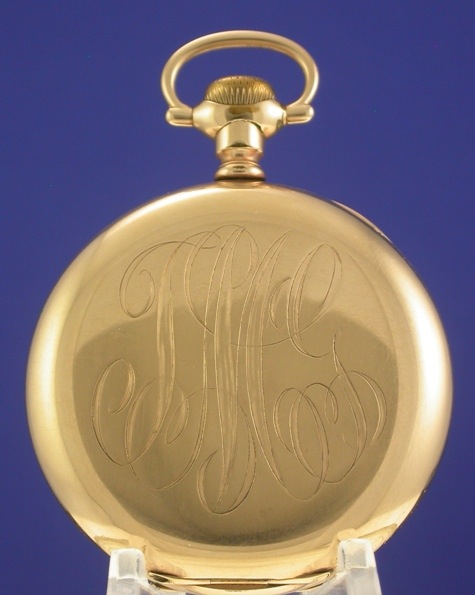 | |||
| Railway Historian IHC Life Member Site Moderator |
Order of Railway Conductors Directory circa 1912 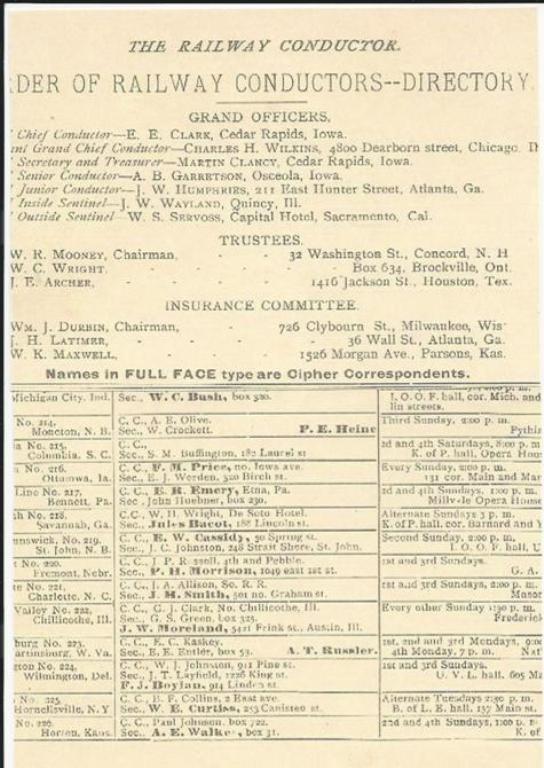 | |||
| Railway Historian IHC Life Member Site Moderator |
CPR's International of Maine Railway After the CPR had completed their railway line from Vancouver, British Columbia to Montréal, Québec, there was one operating problem. With the winter freeze up the port of Montréal was closed from December to May. The CPR's main competitor, the Grand Trunk Railway had a distinct advantage during the winter freeze up problems by shipping through Portland, Maine, which they accessed by using the St. Lawrence and Atlantic Railroad, that the GTR had purchased in 1850. The CPR surveyors looked straight east from Montréal, 350 miles, and saw the underutilized port of St. John's, New Brunswick that was dwarfed by Halifax, Nova Scotia. The route across northern Maine was less mountainous so would be the best way of getting there. The CPR owned trackage east of Montréal through the Eastern townships of Sherbrooke, and Lac Megantic, a roughly 100 mile gap between Lac Megantic and Mattawamkeag required new construction to complete the Montréal St. John direct route. Construction was started from both ends under Chief Engineer James Scott the new line opened in June 1889. And the CPR got trackage rights with Maine Central between Mattawamkeag to Vanceboro. The CPR than purchased the New Brunswick Railway to give them control of the railway from Vanceboro to St. John, New Brunswick.  | |||
| Railway Historian IHC Life Member Site Moderator |
Canadian Pacific Railway International of Maine Division boxcar. On a sad note, it was a year ago yesterday that the downtown community of Lac MeGantic was destroyed when a runaway train of crude oil derailed and burned for days, 47 innocent people lost their lives, due to the locomotive engineer not properly securing his train when he went off duty. 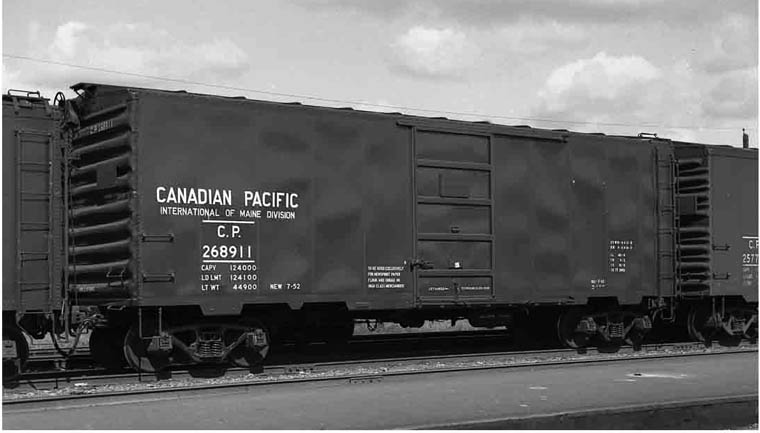 | |||
| Railway Historian IHC Life Member Site Moderator |
History of the Kaslo and Slocan Railway The Kaslo and Slocan Railway was a 3 feet narrow gauge railway running between Kaslo, Slocan, and Sandon, a mining community in the Kootenay region of the interior of British Columbia, starting in 1895, it had 33 miles of track and was originally operated by the Great Northern Railway that was very profitable in the 1890s, when due to high operating costs from high maintenance with its location along the steep hills where forest fires, frequent snow and mud slides hindered operations, in 1900 Sandon burned to the ground, and labor problems at the mines brought an end to the boom years, causing financial problems for the railway, by 1904. The line was losing money on each train it ran. In 1911, the Great Northern sold the railway to local Kaslo business people, with backing of the provincial government, the CPR agreed to lease the K&S for 999 years 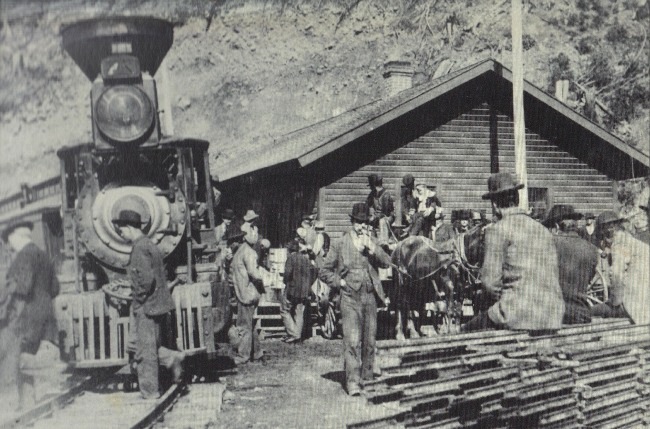 | |||
| Railway Historian IHC Life Member Site Moderator |
The previous photo is the station at Sandon before the fire. Map of Great Northern's routes out of Spokane, Washington into southern British Columbia | |||
| Railway Historian IHC Life Member Site Moderator |
Great Northern map showing Kaslo, Cody, Sandon, and Nelson, BC, where the Great Northern had acquired the Nelson and Fort Shepherd Railway, which gave them access to the rich silver and gold mines. 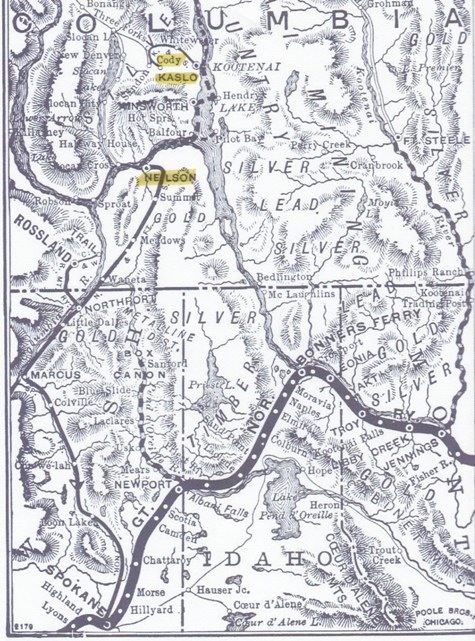 | |||
| Railway Historian IHC Life Member Site Moderator |
After silver was found near the community of Sandon in 1891, several investors obtain a provincial charter in 1892. To build a railway between Kaslo and the new mines. Kaslo, on the shore of Kootenay Lake was served by steamboats connecting with railways near Creston and Nelson, British Columbia. The railway was built, west of the Kaslo River to the pass with Seaton Creek, passed along the hill above the boom town of Three Forks to Sandon. The Canadian Pacific Railway had already reached Three Forks in late 1894 by building from the West from Nakusp on the Arrow Lakes with its Nakusp and Slocan Railway. Both railways reached Sandon in late 1895. A map showing Canadian Pacific Railway's route into Sandon from its mainline at Revelstoke via the Arrow Lakes and it's Nakusp and Slocan Railway 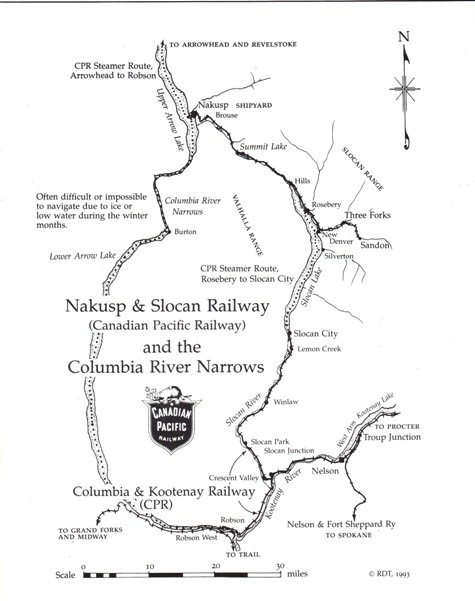 | |||
| Railway Historian IHC Life Member Site Moderator |
In 1895, after obtaining financial backing from the Great Northern Railway which was seeking advantages against the Canadian Pacific Railway and traffic for its main line at Spokane, Washington. Great Northern had gained control of the Nelson and Fort Shepherd Railway in 1893, which gave it access to the Kootenay Lake and its Kootenay Railway and Navigation steamships. Much of the ore from the K&S was shipped to the US smelters, providing traffic for the GN. Famous photograph of the Kaslo and Slocan Railway stopped on a trestle. 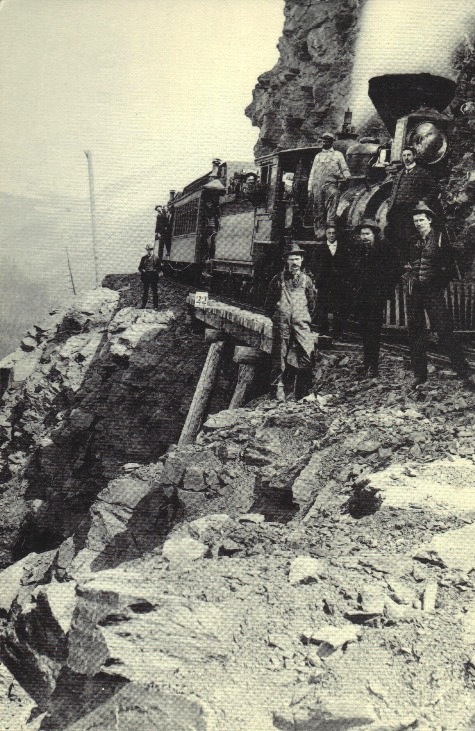 | |||
| Railway Historian IHC Life Member Site Moderator |
The Kaslo and Slocan faced stiff competition with the CPR's Naskup and Slocan for the ore from the mines. On December 16, 1895, crews from the Kaslo and Slocan attacked and demolished the station the CPR had just built on land disputed between the two railways. The CPR relocated the station to other land. Both railways competed with building spurs to service mines in order to obtain ore traffic destined for the other railway. Cody Station today 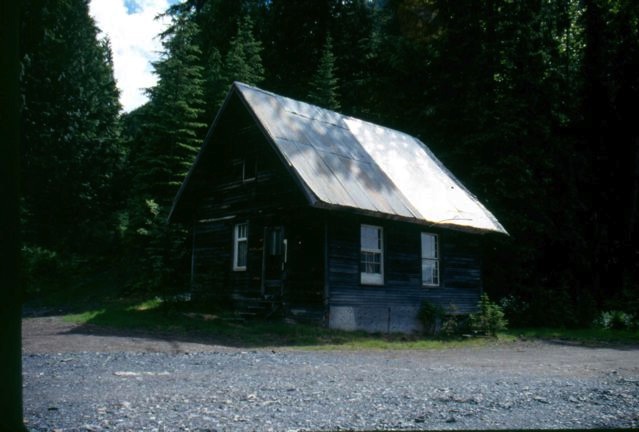 | |||
| Railway Historian IHC Life Member Site Moderator |
Kaslo and Slocan Railway right-of-way today Mother Nature has reclaimed it. This is the location where the Railway photo of the Train on the Trestle was taken 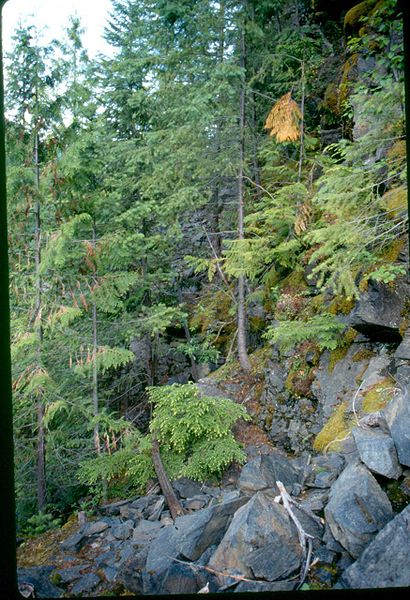 | |||
| Railway Historian IHC Life Member Site Moderator |
One of my latest Hamilton, private-label's Double Sunk Roman Numerals in black, 24-hour inner tract in red, private-label dial marked “O. Strathearn. Kalso, B .C.” with Canadian 24-hour hands. 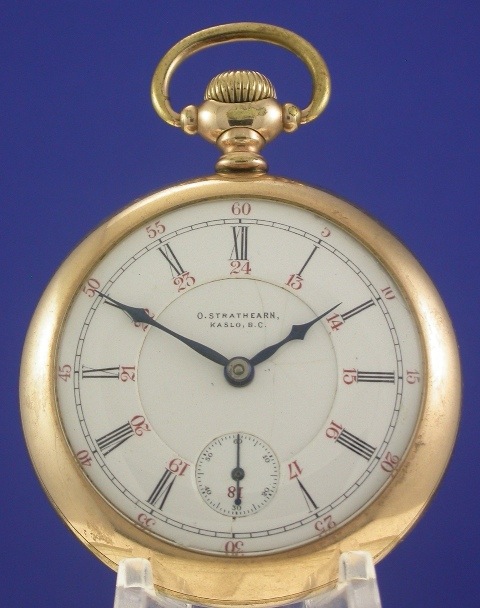 | |||
| Railway Historian IHC Life Member Site Moderator |
Another view of the dial with the bezel off 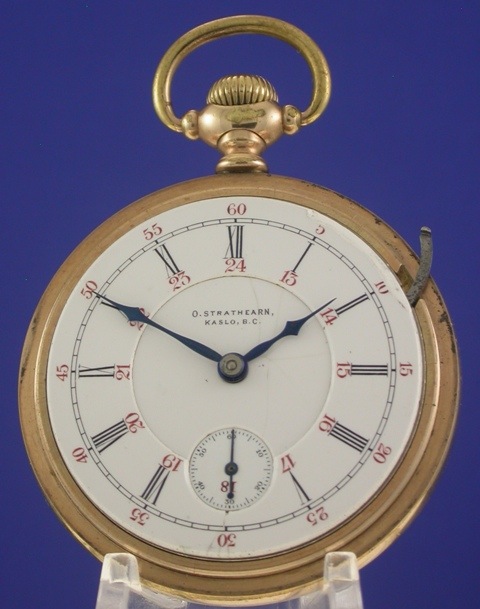 | |||
| Railway Historian IHC Life Member Site Moderator |
Dial signature close-up 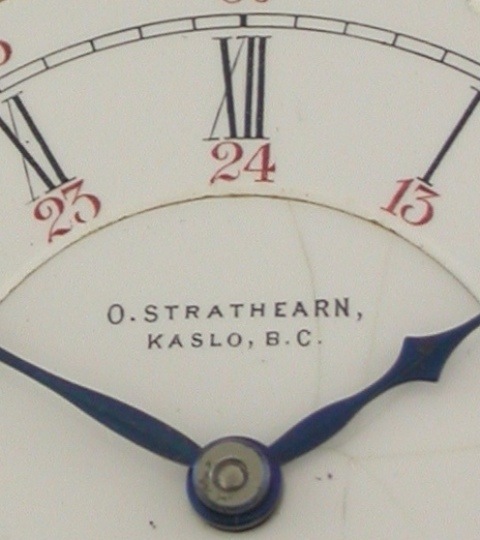 | |||
| Railway Historian IHC Life Member Site Moderator |
Re-cased in Star Watch Case Co. 20 year yellow gold filled case. 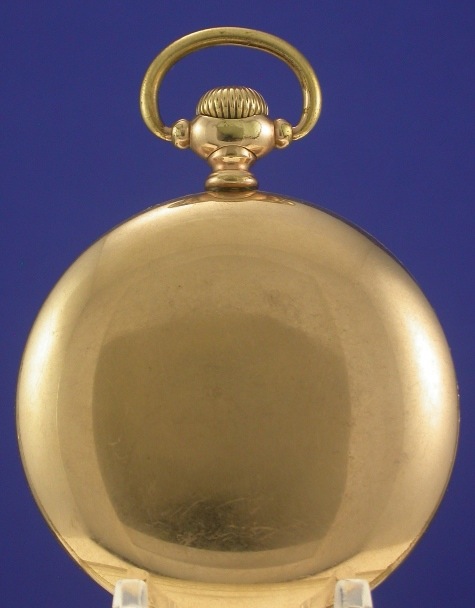 | |||
| Railway Historian IHC Life Member Site Moderator |
Serial No. 3646825. 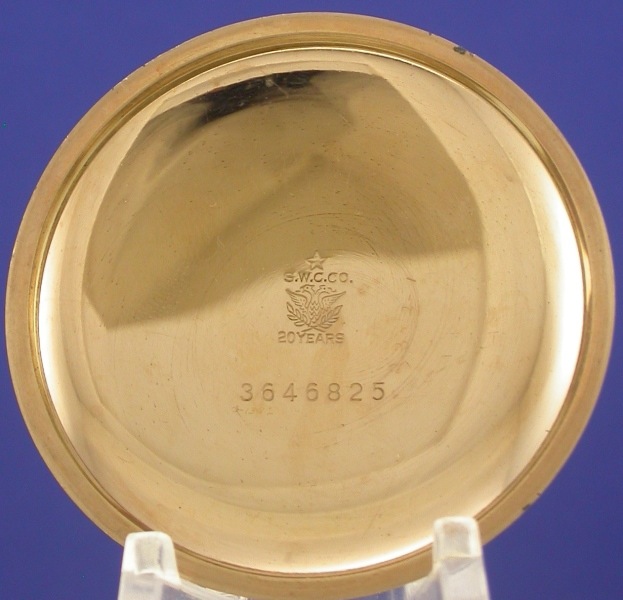 | |||
| Railway Historian IHC Life Member Site Moderator |
This Grade 936 pocket watch would pass Railway Watch Inspection requirements of all railways in North America. Private-label pocket watches, was a service done free of charge for the wholesalers when they ordered more than one. Sometimes just the dial, and the movement could be marked too, as this example shows, this was done at the Hamilton Watch Co. in Lancaster, Pennsylvania, beautiful two toned damaskeening. 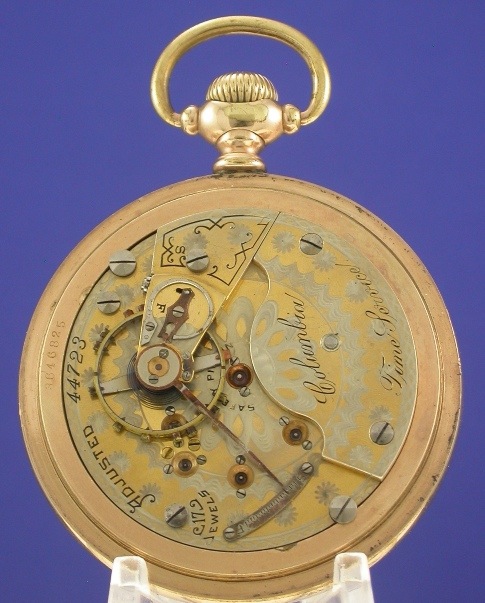 | |||
| Railway Historian IHC Life Member Site Moderator |
The Hamilton Watch Co. ledgers show that this Hamilton 18 size, 17 jewel, Grade 936 Serial No. 44723 Date manufactured December 30, 1898, Date sold March 8, 1899 to the wholesaler the Montréal Watch Case Co., Montréal, Québec, Canada. Movement marked "Columbia Time Service" 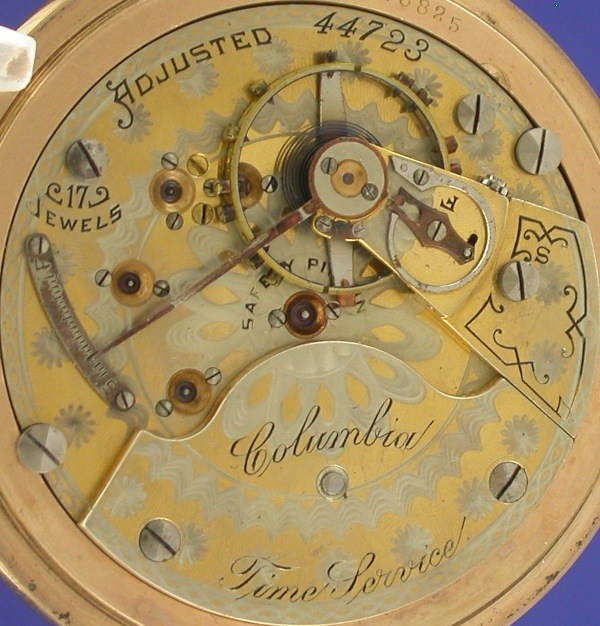 | |||
| Railway Historian IHC Life Member Site Moderator |
I've been away from posting on this thread for quite a while now, the reason being that my Nikon camera gave up the ghost, so I was able to save up and buy a new one last week, I am pleased with the results so here is a Canadian private-label; Illinois 18 size, 15 jewel, Key Wind, Key Set, Serial No. 805508 Manufactured 1888, Grade 5 Canadian private-label Roman numeral. Double sunk dial marked; R Croskery, Palmerton, Ont. in the Meggers Ehrhardt Illinois book it shows as a Hunter, but it's obviously an open face pocket watch. 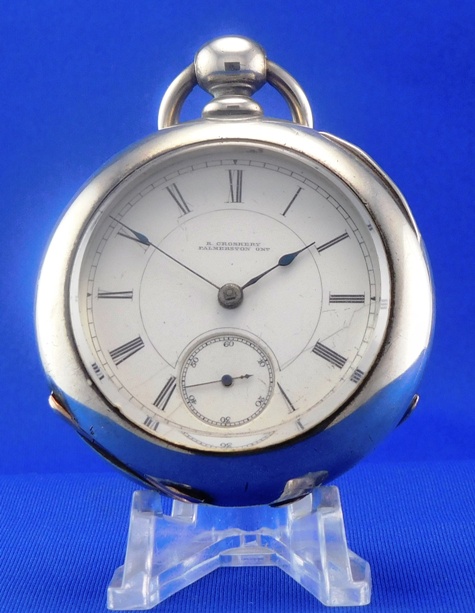 | |||
| Railway Historian IHC Life Member Site Moderator |
Dial with face open  | |||
| Powered by Social Strata | Page 1 ... 41 42 43 44 45 46 47 ... 52 |
| Your request is being processed... |
|
©2002-2025 Internet Horology Club 185™ - Lindell V. Riddle President - All Rights Reserved Worldwide

